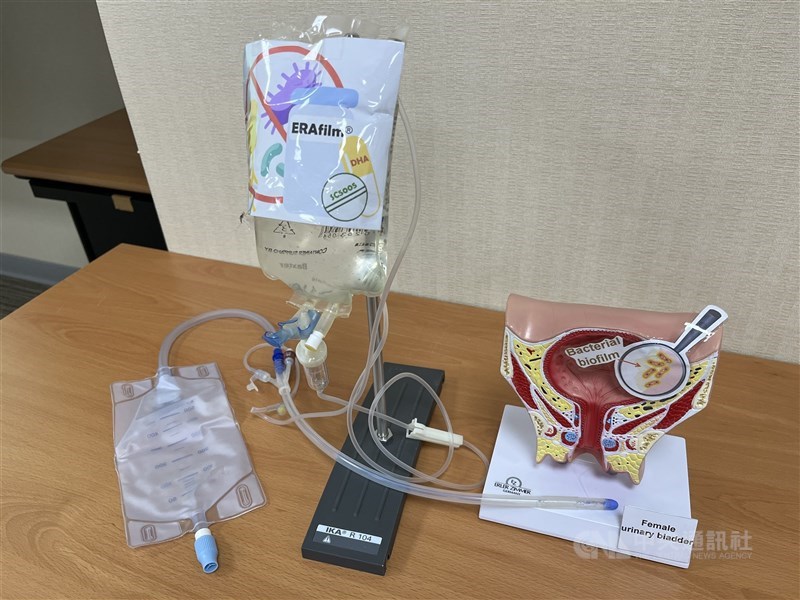
Taipei, April 22 (CNA) Research at National Taiwan University (NTU) has concluded that docosahexaenoic acid (DHA) combined with a small molecule medicine eradicates bacteria biofilms on catheters, which could help prevent catheter-associated infections common among hospital inpatients.
Biofilm is a collection of different species of bacteria that gather on the surfaces of artificial implants or medical devices, explained Chiu Hao-chieh (邱浩傑), a professor at the Department of Clinical Laboratory Sciences and Medical Biotechnology at NTU.
When biofilms form on surfaces such as urinary catheters or pacemakers, they become difficult to remove due to shields which block attacks from the human immune system or antibiotics. This significantly increases the chances of infections like catheter-associated urinary tract infections (CAUTIs), Chiu said.
"For adult patients who are hospitalized, about a quarter require urinary catheters during their stay," he said, adding that there is approximately a 75 percent chance of developing a CAUTI after having a catheter inserted.
Citing data from the United States, Chiu stated that CAUTIs cost America an extra US$450 million in medical expenses each year and have a 2.3 percent mortality rate.

Chiu's team, funded by the National Science and Technology Council (NSTC), found that DHA, a fatty acid that is widely used as a dietary supplement, combined with SC5005, a small molecule medicine that was first synthesized by his team, can penetrate biofilms. Together they display synergistic bactericidal activity -- the ability to kill the bacteria.
Regarding the results, Chiu said the combination of DHA and SC5005 can effectively eradicate over 95 percent of biofilms on urinary catheters collected from patients who developed CAUTIs within 10 minutes, regardless of bacterial species or their drug resistance.
While no detectable cytotoxicity toward human cell lines was observed, the team also tested whether Staphylococcus aureus, a common bacterial species on biofilms, would develop drug resistance after long-term exposure to the combination.
Chiu said after 35 consecutive days of using the combination, no resistance appeared to have built up, regardless of whether the Staphylococcus aureus strain was resistant to other drugs.
"This indicates that our combination can be safely used for the long term," he said, noting that the team has decided to name the combination "ERAfilm."
In the future, Chiu expects that saline containing "ERAfilm" -- which is still in the nonclinical development stage -- can be injected into patients' bladders. It will then remove biofilms on the urinary catheters daily to prevent CAUTIs.
When discussing other medications aimed at removing biofilms, Chiu mentioned that there is only one competitor abroad that has developed a drug with similar effects, which has entered the clinical stage, utilizing bacteriophage.
"However, bacteriophage can only infect specific bacteria, unlike our approach, which is broad-spectrum," Chiu said.
Aside from Taiwan, he said the team has also obtained or is in the process of applying for patents for SC5005 and its derivatives in other countries and regions, such as the United States, China and the European Union.

- Business
Agricultural, forced labor products discussed in Taiwan-U.S. trade talks
05/03/2024 10:46 PM - Business
Gas-fired generators to be on grid when nuclear reactor exits: Wang
05/03/2024 10:32 PM - Politics
U.S. lawmakers urge IOC to end 'Chinese Taipei' mandate for Taiwan
05/03/2024 10:30 PM - Society
Man sentenced to 80 months in jail for fatal DUI
05/03/2024 10:21 PM - Politics
MOFA says Hsiao's visit to Europe smooth despite reported resistance
05/03/2024 10:14 PM
